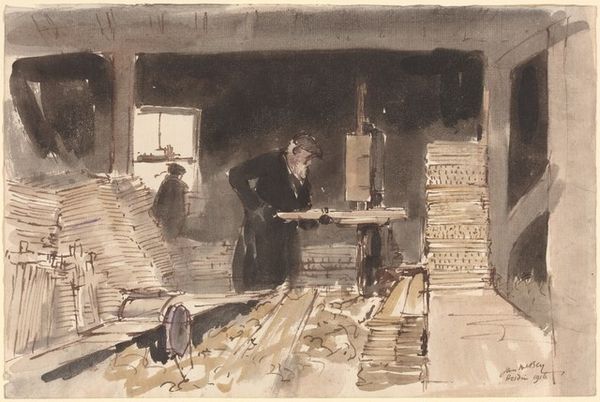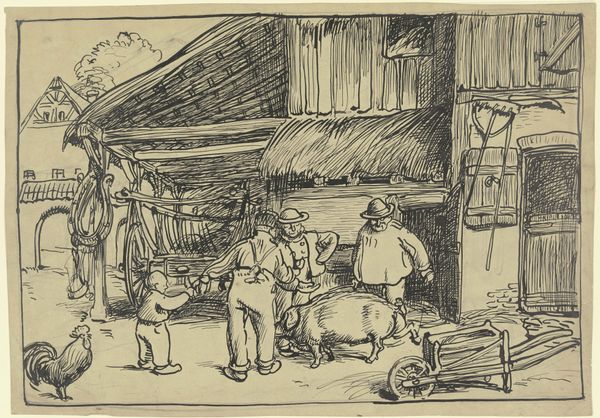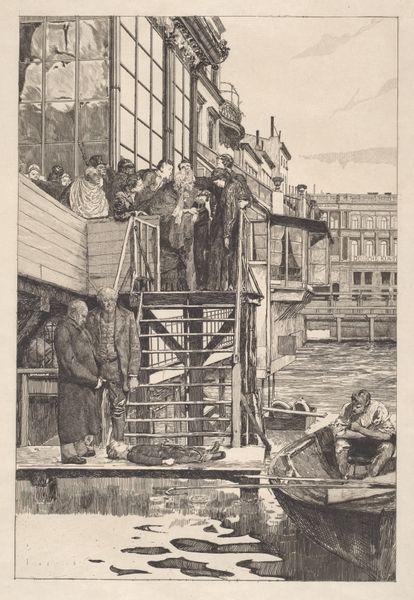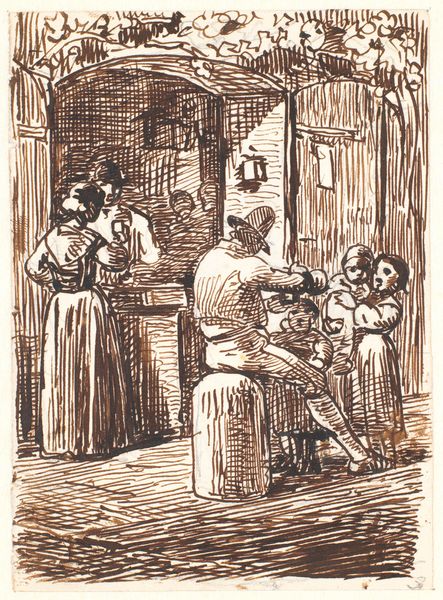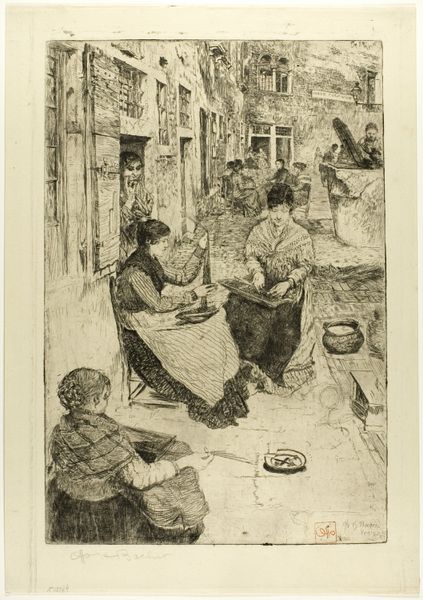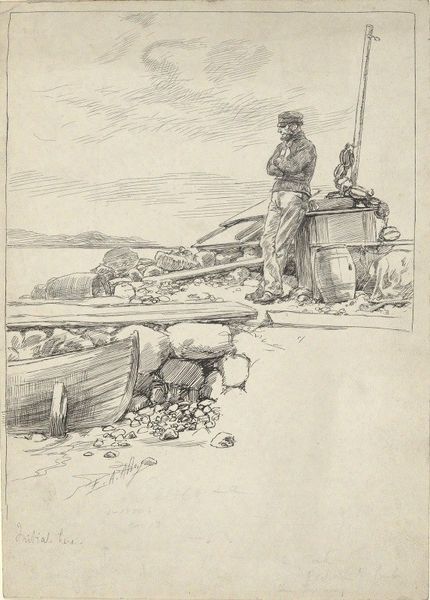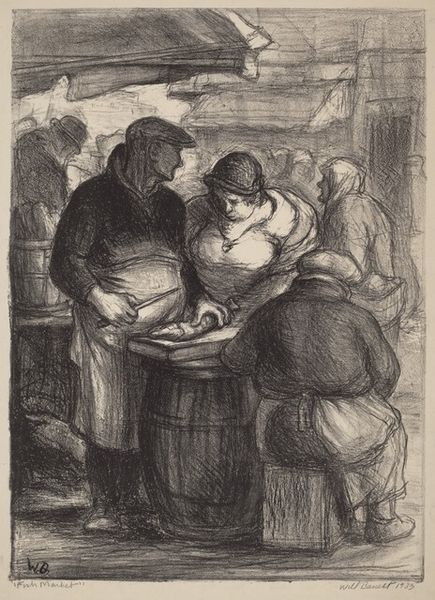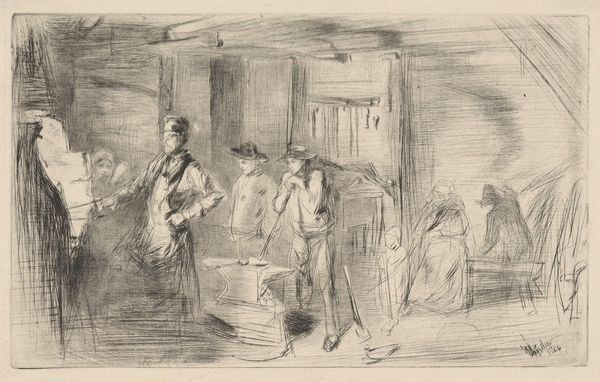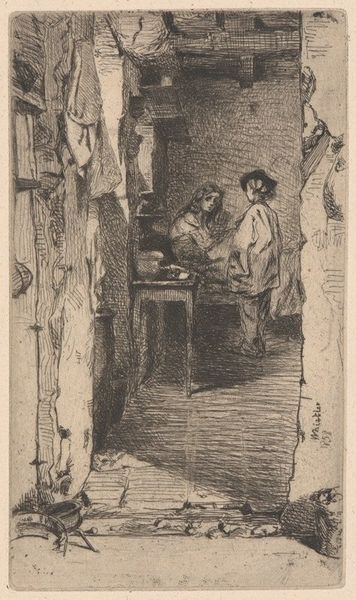
drawing, print, pencil, graphite
#
drawing
# print
#
pencil
#
graphite
#
genre-painting
#
realism
Dimensions: Image: 425 x 340 mm Sheet: 545 x 420 mm
Copyright: National Gallery of Art: CC0 1.0
Curator: Let's turn our attention to "Newport Oysterman," a graphite drawing created by Albert Edward Sterner in 1913. What's your immediate impression? Editor: Gray. So much gray! It conveys a certain melancholy. The low-value contrasts throughout give it a somber feel, as if witnessing a fading way of life. Curator: Interesting. I am more compelled by Sterner's confident draftsmanship, his control of line and shadow. The composition, for example, uses these vertical structural beams and barrel shapes to create a powerful sense of depth. Observe how he models the figures themselves with varying pressures, suggesting volume and mass. Editor: The figures… they evoke images of work and the cyclical nature of daily life. Oysters have historically symbolized prosperity, but also, hermeticism—a closing off. These figures, backs turned, almost vanish into the backdrop. Curator: Yes, this work reflects the ethos of Realism. Everyday laborers rendered not heroically, but as elements within their mundane environment. It focuses on what’s tangible. Observe the textural variation in the graphite marks depicting the wooden beams, the clothing, versus the rough shucked shells. Editor: I cannot ignore the psychological weight, however. The rough, almost oppressive architecture looming overhead… it reminds me of the difficult work, the constant threat of the elements. The oyster shells themselves, discarded heaps representing both bounty and waste. This scene, rooted in time, captures the cyclical beauty of maritime tradition facing the challenges of modernity. Curator: Indeed. A dichotomy clearly articulated in its artistic forms! It’s an evocative piece of work. I found the way he uses light and shadow to establish the receding architectural space most affecting. Editor: Yes, and considering these humble visual emblems of sustenance and labour certainly gives much food for thought.
Comments
No comments
Be the first to comment and join the conversation on the ultimate creative platform.


